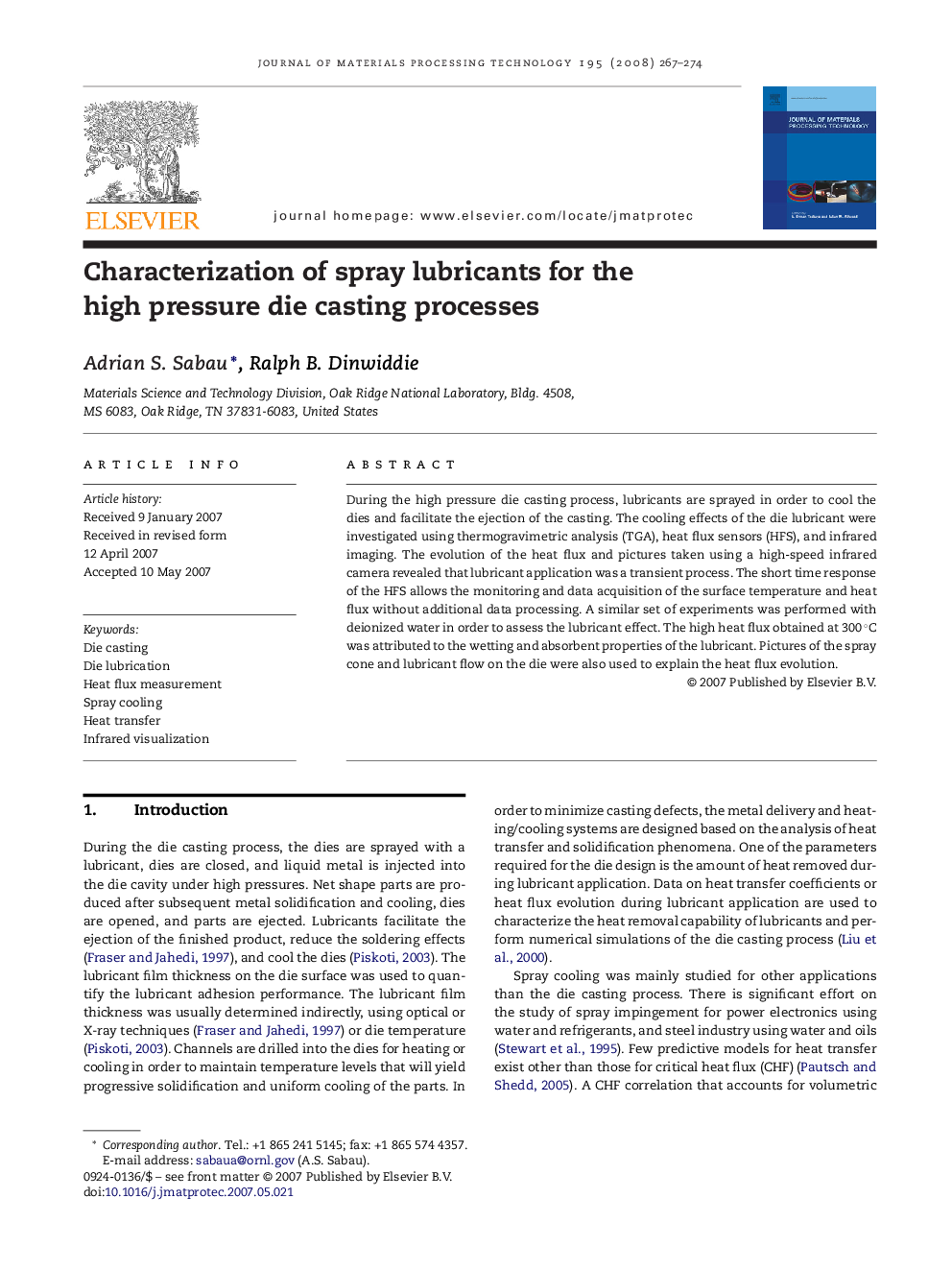| Article ID | Journal | Published Year | Pages | File Type |
|---|---|---|---|---|
| 793873 | Journal of Materials Processing Technology | 2008 | 8 Pages |
During the high pressure die casting process, lubricants are sprayed in order to cool the dies and facilitate the ejection of the casting. The cooling effects of the die lubricant were investigated using thermogravimetric analysis (TGA), heat flux sensors (HFS), and infrared imaging. The evolution of the heat flux and pictures taken using a high-speed infrared camera revealed that lubricant application was a transient process. The short time response of the HFS allows the monitoring and data acquisition of the surface temperature and heat flux without additional data processing. A similar set of experiments was performed with deionized water in order to assess the lubricant effect. The high heat flux obtained at 300 °C was attributed to the wetting and absorbent properties of the lubricant. Pictures of the spray cone and lubricant flow on the die were also used to explain the heat flux evolution.
